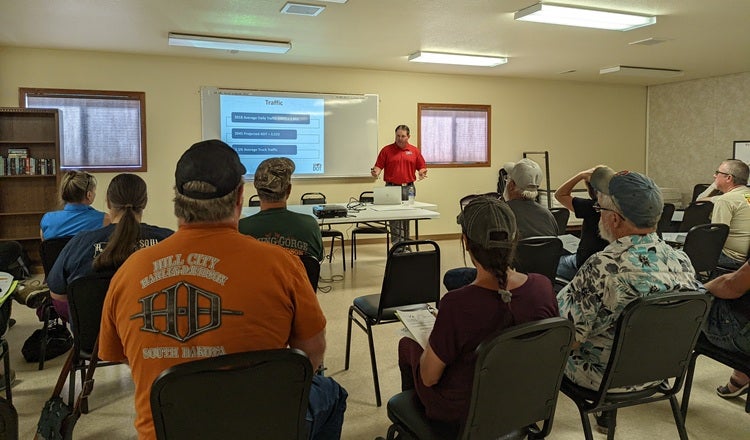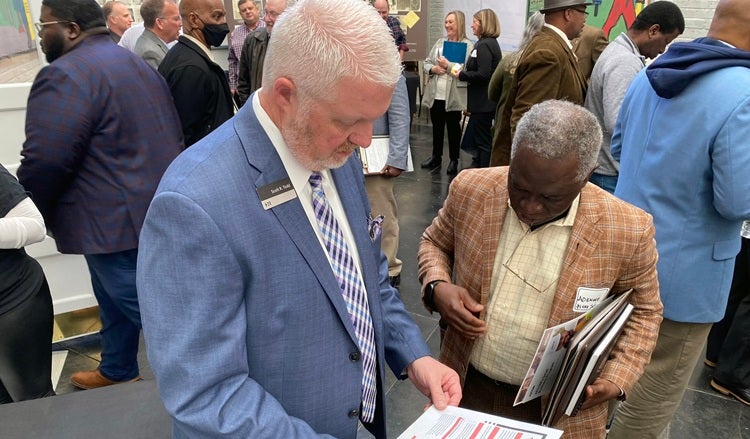
From Invisible to Indispensable: Telling Your Utility’s Story
Showcase the Impact of Your Utility Through Storytelling
Most people only think of their water utilities when something goes wrong. But behind every drop are passionate professionals, complex systems and crucial decisions that keep communities healthy and resilient. In today’s fast-moving world of constant information and rapid change, quietly doing good work isn’t enough. To earn trust, secure funding and engage communities, utilities must become storytellers.
The Communication Gap
For decades, utilities operated in the background, with little need to explain their work. But today, silence can be risky. A common adage in the communications industry is, “If you don’t tell your story, someone else will,” and that has never been truer. Customers have both traditional platforms and social media vying for their attention, often times with incomplete or inaccurate information. Water utilities must tell their own stories, and not just when bad news comes around.
Be the First to Know
Subscribe to receive our Water Insights
Communicating about rate increases, service disruptions or construction delays is a necessary part of being transparent and informative, but talking about these things alone can feel like you’re the friend who only calls when they need something. A lack of proactive communication can create a trust gap that’s hard to close. To shift this narrative, utilities must proactively communicate their value, humanize their work and build relationships before a crisis hits.
Storytelling Starts with Values
Effective storytelling begins with understanding what your audience values. Whether it’s reliability, public health, affordability, environmental protection or economic development, the key is to connect your work to what matters most to the people you serve.
For instance, we are currently supporting a stream rehabilitation project that is experiencing a hurdle because the new mayor doesn’t fully understand the purpose and need of the project. Rather than relying on past messaging, we are reframing the project’s benefits to align with the mayor’s priorities: affordable housing and economic growth. We created tailored materials that speak directly to his agenda. All of the project's benefits remain the same, but the framing may make all the difference when getting this project constructed.
This approach works for external audiences, too. Farmers, environmental groups, business owners and residents all have different concerns. We use research, community analytics and local insights to craft messages that resonate with each group, but the messaging is always grounded in shared values.

Lead with Emotion, Not Just Information
A water agency has many stories to tell. They can range from informative to entertaining, but there are also stories that ask the audience to act. Behavior change is hard. Whether it’s conserving water, accepting a rate increase or supporting a new facility, facts alone don’t drive change. People need to connect with something.
That’s why we focus on telling stories that evoke emotions. We help utilities move beyond charts and statistics to share stories of the people behind the work who are passionate about serving their communities. Stories about operators, engineers and customer service reps can humanize the utility and build empathy among customers.
We also help utilities articulate the emotional value of water. It’s not just about cost or compliance. Water is what makes life possible. It’s the river that attracts tourists and sets a beautiful backdrop for family gatherings, the tap that fills a baby’s bottle or a dam that protects homes from flooding. When we connect to those deeper meanings, we can build trust and inspire action.
Data-Informed, People-Centered Strategies
At the heart of a strong communications strategy is a simple idea: people come first. That means creating messages and engagement opportunities that are easy to access, feel approachable and truly matter to the communities we serve.
To do that well, we start by getting to know our audience. Publicly available data like demographics, education levels, internet access and preferred communication platforms can help paint a clearer picture of who we’re talking to. Looking at past media coverage adds another layer, offering insight into public sentiment and highlighting perspectives that can help shape messaging. But data is just the beginning.
We believe in co-creating communication plans with the people they’re meant to reach. That means working with stakeholders, listening closely and learning from their lived experiences. In one project, we partnered with farmers to shape messaging around biosolids land application. By listening first, we were able to build trust, create materials that resonated and avoid unnecessary conflict.
When we combine thoughtful data analysis with genuine community collaboration, we build strategies that not only inform but also connect.
Communicate Early and Often: The Golden Rule
Communication isn’t a one-time event. It’s a relationship. And like any relationship, it takes time, consistency and care.
We advise utilities to communicate early and often. Don’t wait until a project is underway or a crisis hits. Start building awareness and trust from the beginning. Research shows that multiple touchpoints are needed before people act. The more they hear from you, the more likely they are to support your work.
We’ve seen this in action as a utility prepared for a temporary water source reduction. Months in advance, they launched a communication campaign with tested messaging and shared it across stakeholders, newsletters, social media and paid advertising. On the day restrictions began, there was a 35% reduction in water use by 35% within 24 hours. Customers complied because they understood “the why.”
Turn Customers into Advocates
One of the most powerful tools a utility can have is an informed community. We’ve seen great success with water academies, whether facilitated in-person or virtual, that educate residents about how their utility works. These programs create champions who can correct misinformation and share the utility’s message in their own words.
We also recommend engaging young people through school programs, water festivals and even coloring sheets. Kids bring their learning home, sparking conversations that build awareness across generations.
And when something goes wrong, transparency is essential. Being the first to share the news clearly, honestly and with empathy can strengthen trust, not weaken it.
Tools That Make an Impact
There’s no one-size-fits-all approach, but here are some tools we’ve seen work well:
- Grassroots outreach, events, and pop-ups: Connect with people in their own space.
- Social media and email campaigns: Cost-effective, measurable and adaptable.
- Virtual plant tours: Easy to produce and highly engaging.
- Community advisory committees: Build trust and gather feedback.
- Bill explainers: Help customers understand where their money goes.
- Pledge campaigns: Encourage behavior change and track participation.
- QR codes and custom links: Measure return on investment (ROI) from print materials.
And most importantly, stay flexible. Communication is not static — it’s responsive. We continually assess what’s working and adjust as needed.

What Success Looks Like
Success doesn’t always mean applause. Sometimes, it means silence. No angry calls. No surprise headlines. Just a community that understands your work and trusts you to do it well.
In one project, we assisted a utility in navigating a significant cost increase for a large infrastructure project. Thanks to proactive, strategic communication, the news coverage was neutral, and that was a win.
When utilities embrace storytelling, they shift from being invisible to being trusted. People know what you do, they give you the benefit of the doubt and they become partners in your mission.
Final Thoughts: Embrace the Opportunity
If you’re just beginning to invest in communications, here’s our advice:
- Don’t shy away from hard conversations.
- A little investment goes a long way.
- Your community is ready for more than you think.
- Speak as if you’re explaining it to your neighbor, grandmother, or child.
Storytelling isn’t just a tool; it’s an important engagement strategy. It builds trust, creates understanding and inspires action.
So don’t wait for a crisis to communicate. Start now! Share the heart behind the hard work. Talk to your communities like neighbors. The result? A utility that’s not just seen but valued, not just functional but essential.
At HDR, we take a holistic, people-first approach to public involvement and communication. We’ve worked with water and wastewater utilities across the globe to help them shift from reactive messaging to proactive storytelling that resonates. If you’re ready to tell your utility’s story, please email us at water [at] hdrinc.com (water[at]hdrinc[dot]com).





